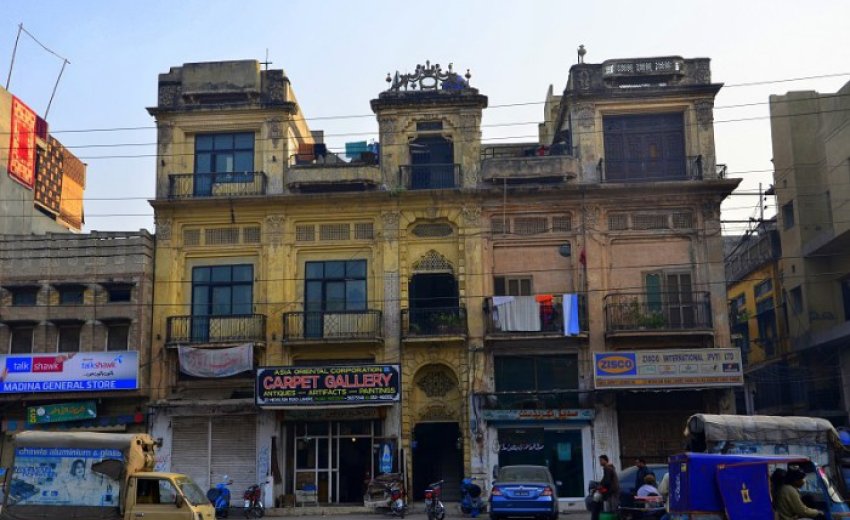Discover the legendary dark grey horse Laili, adored by Ranjit Singh, known for its beauty, grace, and the fascinating journey through 19th-century Punjab.
Discover the historical journey of Ata Muhammad Khan Barakzai, Kashmir's governor in 1809, caught in a power struggle over the coveted region.
Discover Qila Gujjar Singh, Lahore's historical gem, where ancient forts meet modern infrastructure. Learn its legacy of Bharigi rulers today.
Explore Azim Khan's legacy as Kashmir's governor, his battles with Maharaja Ranjit Singh, and his pivotal role in Afghan history. Discover more!
Discover the bravery of Ramdat Singh, a valiant soldier in Maharaja Ranjit Singh's army, who fought fiercely until his last battle in 1790.
BHAG SINGH, also referred to in government records as Baj Singh, was an associate of Bhai Maharaj Singh, leader of the anti British revolt in the Punjab in 1848-49. Originally a disciple of Bhai Bir Singh of Naurangabad, he survived the attack on his dera on 7 May 1844 and went on a pilgrimage to Nanded. On his return to the Punjab, he joined Bhai Maharaj Singh at Amritsar shortly before the latter went underground in June 1847 to escape arrest by the British in connection with the Prema conspiracy case. Bhag Singh escaped towards Kangra and rejoined Bhai Maharaj Singh before the beginning of the second AngloSikh war in 1848. After the battle of Chelianvala he made a trip to Peshawar, rejoining his leader at Dev Batala, in the Jammu area.
Explore the intriguing journey of RATTRAY, an English soldier who switched allegiance from the Sikh army to Dost Muhammad Khan in 1836. Discover his transformation in Kabul.
CHATTHIAN DI VAR is a Punjabi ballad describing the battle between Mahan Singh, father of Maharaja Ranjit Singh, and Ghulam Muhammad Chattha, a Muslim chieftain of the Chattha clan of the Jatts. The poet is some Pir Muhammad, whose name appears in some verses of the poem. The Var was first published in Persian script by Qazi Fazal Haq, a teacher at Government College, Lahore. According to his statement, Pir Muhammad, the poet, was a resident of Gujrat district, and he composed this ballad in the early years of the British occupation of the Punjab.
Explore the historic rise of the Ruhilas from the Yusafzai tribe, establishing power between the Ganges and Kumaon hills in the 18th century.
DOST MUHAMMAD KHAN. AMIR (1791-1863), ruler of Kabul and Qandahar, was the son of Painda Khan (executed 1799), the Barakzai chief. Dost Muhammad`s first engagement with the Sikhs was at Attock, the Afghan citadel, which had fallen into the hands of the Sikhs in June 1813. In the conflict which lasted three months, Dost Muhammad Khan, who himself led the attack in the battle of Haidru, 8 km from Attock, was badly mauled by the Sikh force commanded by Diwan Mohkam Chand. As a result of the fighting among the members of the Durrani and Barakzai families, Dost Muhammad finally established himself in 1823 in Kabul, Kashmir having been lost to the Sikhs in 1819.




